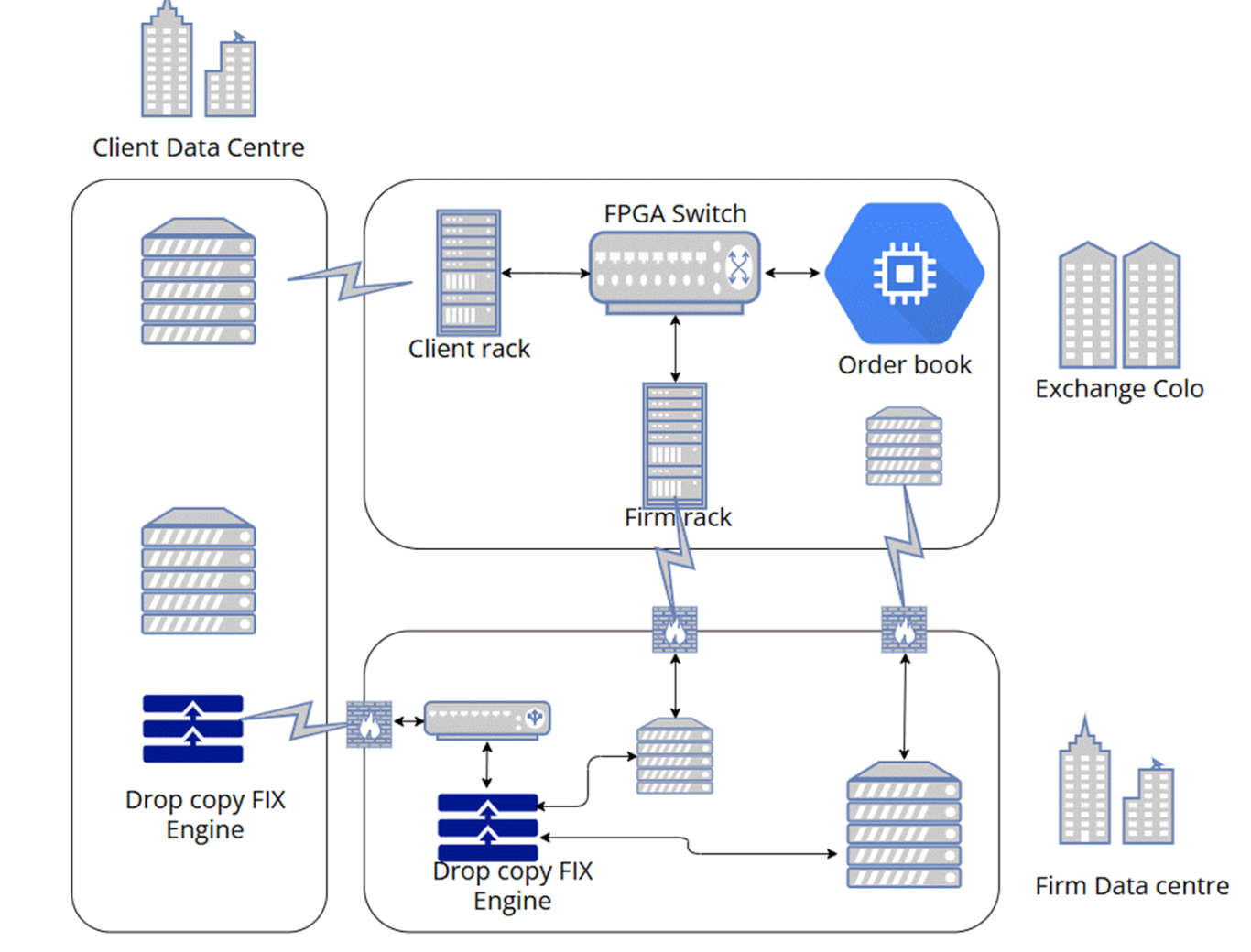CONNECTIVITY
I have been fortunate to collaborate closely with a diverse range of clients across the financial industry, including high-frequency trading (HFT) firms, hedge funds, market-making firms, and medium to large trading organizations. Each client type presented unique challenges and requirements, allowing me to develop tailored solutions that addressed their specific needs while adhering to stringent performance, security, and regulatory standards.In addition to that, I have extensive experience in managing connectivity to major European stock exchanges across multiple countries, ensuring clients had uninterrupted access to key trading venues. This experience has given me a deep understanding of the nuances of financial trading infrastructure, the importance of low-latency solutions, and the critical need for compliance and reliability in a fast-paced, highly regulated environment.
FPGA Connectivity Project
In my recent role, I led the onboarding of clients to ultra-low latency platforms, including FPGA-based solutions for direct market access, ensuring seamless integration and minimal downtime throughout the process.
FPGA Switches: Overview and Key Benefits
FPGA (Field-Programmable Gate Array) switches are specialized, hardware-based network devices designed to achieve ultra-low latency and high-performance packet processing. Unlike traditional network switches that rely on fixed ASICs (Application-Specific Integrated Circuits), FPGA switches are programmable, allowing for greater customization and optimization of data paths.
Key Features of FPGA Switches:
- Ultra-Low Latency:
- FPGA switches are optimized for sub-microsecond latency, making them ideal for environments where speed is critical, such as high-frequency trading (HFT) and financial markets.
- Customizable Packet Processing:
- The programmable nature of FPGAs allows organizations to tailor packet processing logic to specific use cases, enabling features like custom routing, filtering, and packet manipulation.
- Deterministic Performance:
- Unlike software-based solutions, FPGA switches provide consistent, deterministic performance by processing packets directly in hardware, minimizing jitter and variability.
- Parallel Processing:
- FPGAs leverage parallel processing capabilities, handling multiple tasks simultaneously, which boosts throughput and reduces congestion in high-traffic scenarios.
- Protocol Support:
- FPGA switches can support multiple protocols, including FIX, TCP/IP, and UDP, and can be configured to handle proprietary protocols used in specialized applications.
- Hardware Offloading:
- By offloading critical tasks from the CPU to the FPGA, these switches reduce the processing load on servers, freeing up resources and improving overall system efficiency.
- Security and Filtering:
- FPGA switches can implement real-time packet filtering and security measures, such as deep packet inspection (DPI) and denial-of-service (DoS) prevention, directly in hardware.
Applications of FPGA Switches:
- High-Frequency Trading (HFT):
- Used in financial markets to execute trades at lightning-fast speeds, leveraging minimal latency to gain competitive advantages.
- Telecommunications:
- Deployed in 5G networks and data centers for fast, reliable data transmission and routing.
- Defense and Aerospace:
- Used in mission-critical systems where real-time data processing and secure communication are essential.
- Data Centers:
- FPGA switches are employed to optimize network traffic, load balancing, and high-performance computing (HPC) applications.

Advantages Over Traditional Switches:
- Flexibility: FPGA switches can be reprogrammed as requirements evolve, providing future-proof solutions.
- Performance: They offer superior performance in latency-sensitive environments compared to traditional ASIC-based switches.
- Customization: Their programmable nature allows for bespoke configurations tailored to specific workloads or protocols.
Challenges:
- Complexity: Programming and maintaining FPGA-based switches require specialized skills and expertise in hardware description languages (HDLs) like Verilog or VHDL.
- Cost: FPGA switches can be more expensive than traditional switches due to their advanced capabilities and development costs.
FPGA switches provide unparalleled performance and flexibility, making them an essential component in environments where ultra-low latency and high-speed data processing are critical. Their programmability and hardware-based processing capabilities set them apart from traditional network solutions.
We need your consent to load the translations
We use a third-party service to translate the website content that may collect data about your activity. Please review the details in the privacy policy and accept the service to view the translations.
